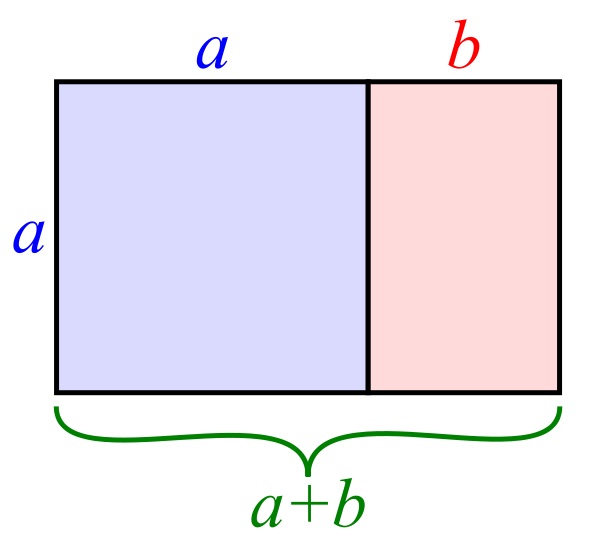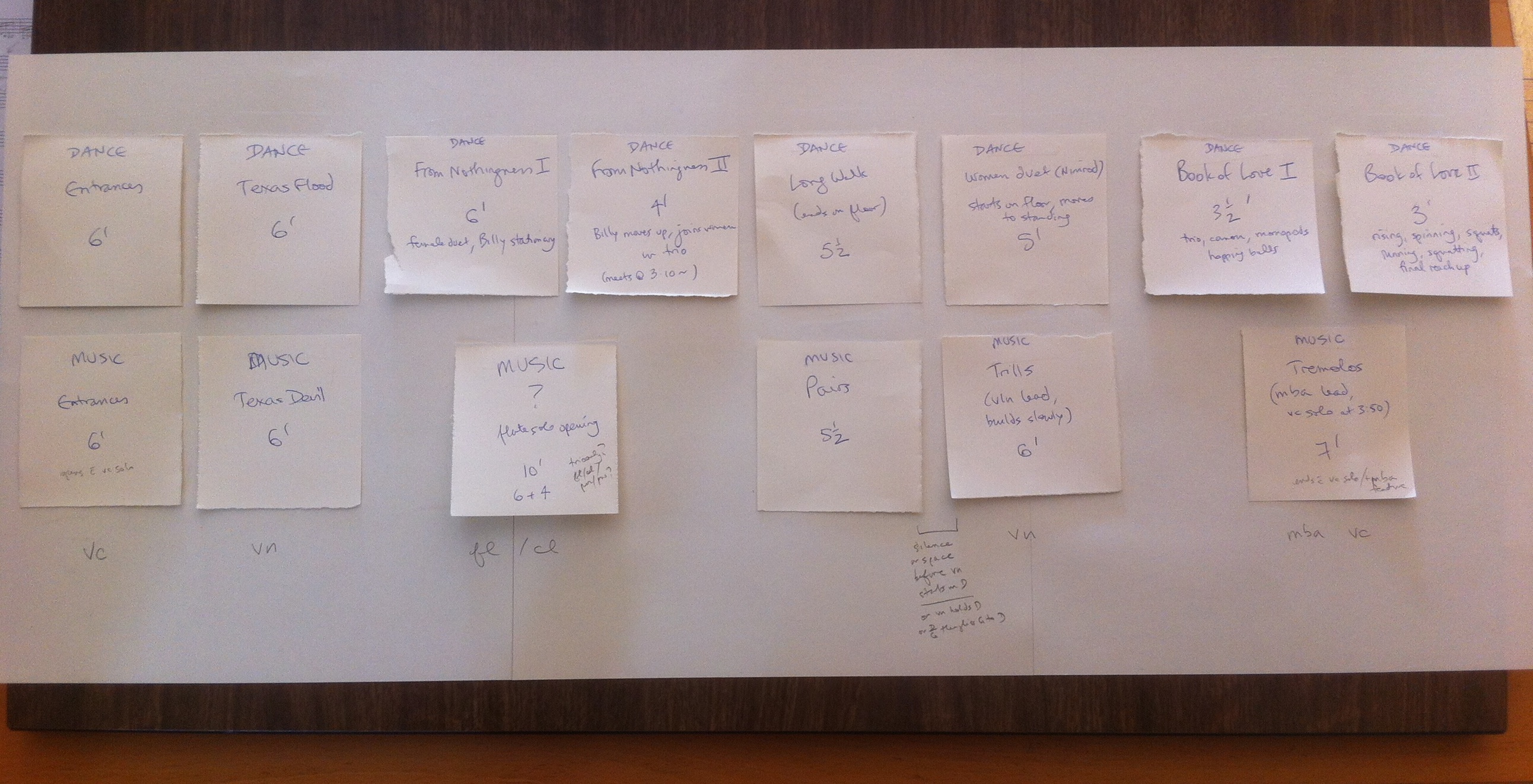 Over the course of those April workshops, the different dances of Book of Love quickly took shape and character, and were further refined over the next few months through some public work-in-progress performances, some of which I was able to see, which kept fuelling my musical imagination. From the musical perspective, after a few movements of “just writing”, there was enough musical time composed that I started having to think about the overall structure and pacing of the music, and to start assigning music to choreography in my own mind so that I knew what choreography remained to have music composed. Even though Jay and Barbara, as the choreographers, would have the final say, and absolutely didn’t have to follow what I thought, I needed something to help me establish the trajectory of the music as music. As I’d already learned, it was possible for the same music to suit different choreography, and vice versa, so I knew that whatever they decided, it would most assuredly work.
Over the course of those April workshops, the different dances of Book of Love quickly took shape and character, and were further refined over the next few months through some public work-in-progress performances, some of which I was able to see, which kept fuelling my musical imagination. From the musical perspective, after a few movements of “just writing”, there was enough musical time composed that I started having to think about the overall structure and pacing of the music, and to start assigning music to choreography in my own mind so that I knew what choreography remained to have music composed. Even though Jay and Barbara, as the choreographers, would have the final say, and absolutely didn’t have to follow what I thought, I needed something to help me establish the trajectory of the music as music. As I’d already learned, it was possible for the same music to suit different choreography, and vice versa, so I knew that whatever they decided, it would most assuredly work.
The in-progress performances had fallen into two sections: a longer multi-movement one of about 40 minutes, and a shorter but more continuous one of about 20 minutes. For all I know, the finished piece may not stay that way, but this gave me a great guideline for putting my music in order, and — bonus — it worked out approximately to the Golden Mean. For the benefit of non-math geeks, this is a principle of proportion  in which the ratio of the smaller part to the larger part is the same as the larger part to the whole thing. The smaller part can be first or second. The principle has been around for a very long time (i.e. ancient Greeks).
in which the ratio of the smaller part to the larger part is the same as the larger part to the whole thing. The smaller part can be first or second. The principle has been around for a very long time (i.e. ancient Greeks).
I use the Golden Mean a lot in my music, often on several levels. Structure and pacing are very important to me both as a composer and as a listener, and it’s where I think a lot of otherwise interesting music these days loses the plot. Temporal proportions are a big part of that. If something is paced well, the listener is totally engaged in the moment, and not thinking about the passage of time, which as a result goes by surprisingly fast. Though the principles are the same, pacing out an hour is more challenging than, say, a 10-minute concert-opening orchestra piece, because there are a lot more highs and lows, some highs being higher than others, some lows being lower than others. In combination with the choreography, this piece has to take the audience along for a substantial dramatic ride, without dropping anyone off along the way.
How does one do that? Post-it notes! Just as I’ve seen my friend and librettist Michael Lewis MacLennan do when he’s working on a script, I gave each section of the choreography and each section of the music a name and a timing (the timing for the choreography coming from the videos of the previous performances). Then I started moving them around. The challenge was the first, longer section, because the second, shorter section was basically one movement in three parts. I thought about matching lengths, matching tempos to choreography (some of the choreography doesn’t work if the pulse is too fast or too slow), giving variety to the tempos of successive movements, looking at which instruments were featured when, thinking about how one dance section ended or how many dancers were in it to keep in mind how it would connect to the next movement. This is my Post-it Chart for the first 40 minutes. It starts with solemn entrance music and goes through devil fiddling music, showy peacock music, and delicate, slow unfolding music before ending (at the Golden Mean!) in a dark and lonely place of low marimba tremolos. Then it’s on to a lot of fast music, a lot of notes, and a lot of measures!

I started composing in early March. I delivered the parts at the end of September. Such was my spring and summer. In a few weeks, Standing Wave will start rehearsing, and I’ll hear the music for the first time from outside my head, and with the beautiful and unparalleled sounds of real acoustic instruments. Then we have a week in early November all together for the first time. Will the timings and tempos work for the choreography? Will we need to finesse transitions? How will it be for the dancers with live musicians, when each reading will be slightly different from the one before? These and other questions will be answered as we put together one of the biggest, most exciting, and most challenging projects I’ve ever had the pleasure to be part of. Thanks to Jay and Barbara for giving me a reason to be terrified, and showing me the way through the terror to a piece I love.
The show runs November 25 through December 5 at the Roundhouse — if you’re in Vancouver, please join us!

Leave A Comment